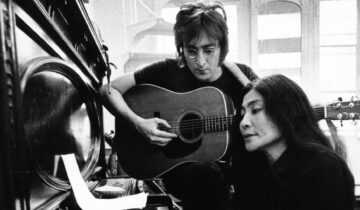Paris 1900 presented more than 100 paintings, prints, posters, ceramics, decorative objects, and sculptures, revealing the height of the Paris art scene at the turn of the twentieth century.
While exploring important aspects of the art nouveau movement, the exhibition delved into other artistic and technological innovations that caused Paris to emerge as the center of artistic creativity as well as how advancements in the arts produced such a culturally rich period in history. It included key artists and leading poster makers, such as Henri de Toulouse-Lautrec, Alphonse Mucha, and Jules Chéret, whose works drew attention to everything from performances at the Moulin Rouge to new commercial products.
The exhibition introduced this period with large photographs of interiors designed by artists under the guidance of art dealer Siegfried Bing. Bing’s Maison de l’Art Nouveau, which was presented in the 1900 Paris Universal Exposition, featured rooms designed by leading artists and designers of the period, such as Edward Colonna, Georges de Feure, and Eugene Gaillard. Bing encouraged artists to work together in creating unified and organic interiors and was prominent in the introduction of Japanese art to the West.
To show the direct influence of Japanese art, four color woodblock prints by Japanese artist Ando Hiroshige as well as Bing’s Japon Artistique with turn-of-the-century interpretations of the prints were included in Paris 1900. The Japanese prints illustrate the very different use of perspective, expressive color, and line that had been used by artists since the Renaissance. The incorporation of this style into European art can be seen in many of the ceramics, paintings, and posters by artists working in Paris around 1900.
Paris 1900 featured fine examples of art pottery by French master potters such as Adrien Pierre Dalpayrat, Paul Jeanneney, Edmond Lachenal, and Ernest Chaplet. Their skillful and inventive designs, many of which were presented in the 1900 Paris Universal Exposition, helped further the international renaissance of the applied arts. The exhibition included works by Lachenal that reveal the number of different historical styles that were being used. Nymph and Lily Vase by Agnès de Frumerie for Lachenal was one of the more interesting examples of how sculpture and ceramics were combined in art pottery.
Several paintings by Charles Guilloux highlight the influences of early-nineteenth-century Japanese art. Guilloux’sL’Inondation, a dreamy landscape composed of rows of trees and water, brings to mind the simplified design, soft tones, and atmospheric effects of Ando Hiroshige’s prints, seen previously in the exhibition. Other key painters included Charles Maurin, Maurice Denis, and Alphonse Osbert, whose subjects and styles are quite varied, ranging from Maurin’s sphinx-like femme fatale to the angelic mortals in Denis’s mural paintings and the classical figures of Osbert. The subject of dreams and dream-like states permeates many paintings from the late nineteenth century. It was an interest that also can be found in the early psychological studies of hypnosis and the related investigation of the unconscious by Dr. Jean Martin Charcot, of whom Sigmund Freud was a student.
Paris 1900 concluded with key works by some of the most important poster and magazine cover designers of the period. These artists depicted everything from theater, circus, and cabaret performances to advertisements for soap, cigarettes, and publications, approaching their subjects in a unique way that redefined commercial art. The graphic works by these artists also made the connection between Japanese and eighteenth-century French art. One such work is Jules Chéret’s Jardin de Paris. This work features costumed figures inspired by the Parisian theater of the eighteenth century, along with decorative lines and flat fields of bright color reminiscent of Japanese prints. Other pioneering graphic artists included were Georges de Feure, Alphonse Mucha, and Henri de Toulouse-Lautrec.
The exhibition was organized by the Museum and co-curated by Hardy S. George, museum chief curator, and Gabriel P. Weisberg, professor of art history at the University of Minnesota. A 176-page, four-color catalogue with essays by Hardy S. George, Gabriel P. Weisberg, Elizabeth Fowler, and Sarah Sik accompanied the exhibit.









